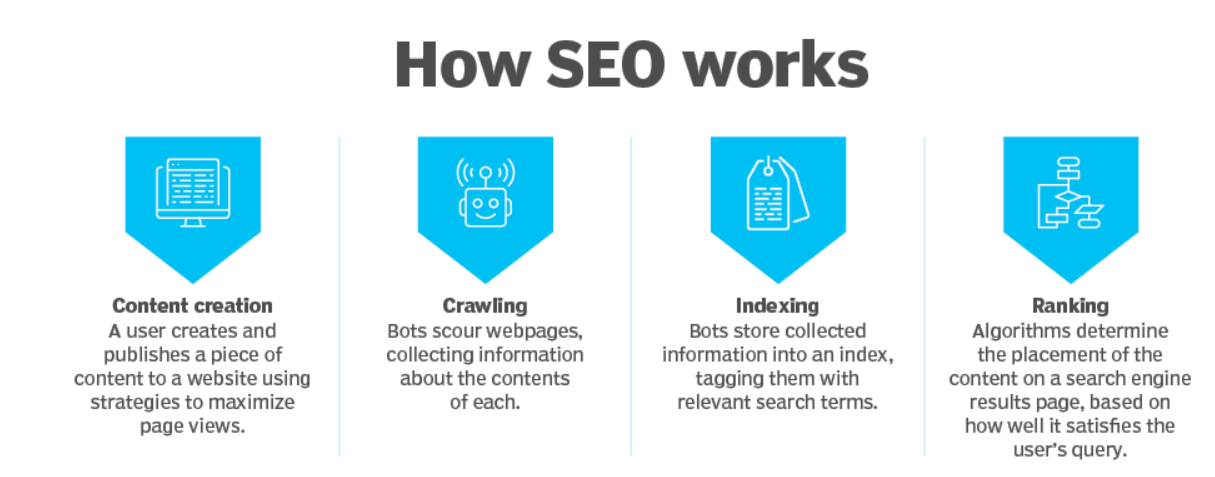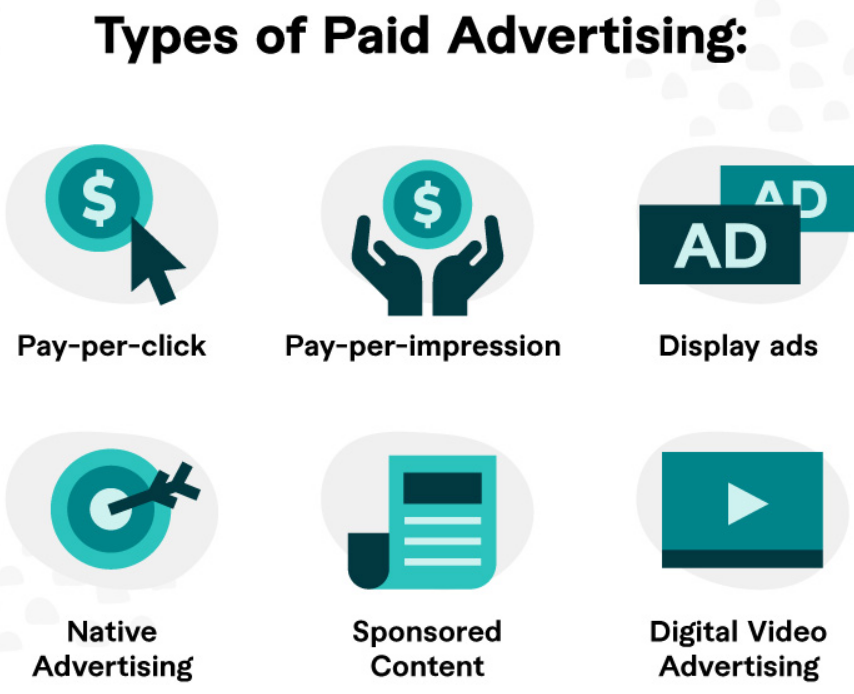
This guide will explore comprehensive strategies across various aspects of digital marketing to help crypto exchanges build a strong brand identity and engage with their target audience effectively. By implementing the strategies discussed, your exchange can navigate the complexities of the crypto market and achieve sustained growth.
Importance of Marketing in the Crypto Exchange Space
A crypto exchange is a digital marketplace where individuals can buy, sell, and trade cryptocurrencies. These platforms facilitate transactions between buyers and sellers, offering a variety of digital assets such as Bitcoin, Ethereum, and numerous altcoins. Crypto exchanges serve as intermediaries that match orders from users, ensuring secure and efficient trades. They operate similarly to traditional stock exchanges but deal exclusively in cryptocurrencies. Some exchanges also offer additional services like wallets, staking, and lending, enhancing their appeal to a broader audience.
Marketing is a critical component in the success of a crypto exchange. The digital currency market is highly competitive, with numerous exchanges vying for the attention and trust of potential users. Effective marketing strategies help differentiate one exchange from another, highlighting unique features and benefits. Additionally, marketing builds brand awareness, attracts new users, and fosters loyalty among existing customers.
Given the rapid pace of innovation and the evolving regulatory landscape in the crypto industry, maintaining a strong and adaptive marketing strategy is essential. Marketing efforts must not only communicate the value proposition of the exchange but also address security, compliance, and user education. By doing so, a crypto exchange can establish a solid reputation, drive user engagement, and achieve long-term growth.
The crypto exchange market is characterized by intense competition and constant innovation. Major players like Binance, Coinbase, and Kraken dominate the space, each offering unique features and services. These exchanges have established themselves as leaders through aggressive marketing, robust security measures, and comprehensive service offerings.
However, the market is also filled with numerous smaller exchanges that cater to niche markets or offer specialized services. These emerging players often focus on specific regions, types of cryptocurrencies, or innovative trading features to carve out their own share of the market.
The competitive landscape is further complicated by the presence of decentralized exchanges (DEXs) like Uniswap and Sushiswap. These platforms operate without a central authority, providing users with greater control and privacy. As decentralized finance (DeFi) continues to grow, DEXs are becoming increasingly popular, challenging traditional centralized exchanges.
To succeed in this environment, crypto exchanges must continuously innovate and adapt their marketing strategies. Understanding the competitive landscape, identifying unique selling points, and effectively communicating them to the target audience are crucial steps in building a successful crypto exchange.
Building a Strong Brand Identity
Crafting a Unique Value Proposition (UVP)
A Unique Value Proposition (UVP) is the cornerstone of your brand identity, succinctly communicating what sets your crypto exchange apart from the competition. It should answer the fundamental question: why should users choose your exchange over others?
- Identify Core Strengths: Highlight what makes your platform unique. This could be superior security features, lower transaction fees, a wider range of supported cryptocurrencies, exceptional customer service, or innovative trading tools.
- Address Pain Points: Understand and address the common challenges and pain points that users face with existing exchanges. Position your exchange as the solution to these issues.
- Clear and Concise Messaging: Your UVP should be clear, concise, and easy to understand. Avoid jargon and complex language to ensure it resonates with a broad audience.
Brand Messaging and Tone of Voice
The brand messaging and tone of voice are crucial in shaping how your exchange is perceived by the audience. Consistency in messaging builds trust and reinforces brand identity.
Developing a Consistent Brand Message:
- Mission Statement: Clearly define the mission of your exchange. This could focus on democratizing finance, providing secure trading environments, or driving innovation in digital assets.
- Core Values: Identify and communicate the core values that guide your exchange. Transparency, security, user-centricity, and innovation are common values in the crypto space.
- Key Messages: Develop a set of key messages that consistently appear across all marketing channels. These messages should reinforce your UVP and core values.
Tone of Voice:
- Professional and Trustworthy: Given the financial nature of crypto exchanges, a professional and trustworthy tone is crucial. This builds confidence among users.
- Accessible and Friendly: While maintaining professionalism, ensure that your communication is accessible and user-friendly. Avoid overly technical language that could alienate potential users.
- Adaptability: Tailor your tone to different platforms and audiences while maintaining overall consistency. Social media posts might be more casual compared to formal website content.
Visual Identity
A strong visual identity helps your brand stand out and makes it easily recognizable. It encompasses all visual elements associated with your exchange, including the logo, color schemes, and design elements.
Logo Design:
- Simplicity and Memorability: Create a simple yet memorable logo that reflects your brand’s essence. It should be easily recognizable even in smaller sizes.
- Relevance: Ensure that the logo reflects the nature of your business. Incorporate elements that suggest finance, technology, or digital innovation.
- Versatility: Design a logo that works well across various media, from websites and mobile apps to printed materials.
Color Schemes:
- Psychological Impact: Choose colors that evoke the desired emotions and perceptions. For instance, blue often conveys trust and professionalism, while green can suggest growth and stability.
- Consistency: Use a consistent color palette across all brand materials to reinforce brand recognition.
Design Elements:
- Typography: Select fonts that complement your brand’s tone. Professional and clean fonts are ideal for readability and conveying trust.
- Imagery and Graphics: Use imagery and graphics that align with your brand’s message. High-quality, relevant visuals can enhance user engagement and communication.
Digital Marketing Strategies
Search Engine Optimization (SEO)

SEO is vital for increasing the visibility of your crypto exchange in search engine results, and driving organic traffic to your website. A well-executed SEO strategy ensures that potential users find your exchange when searching for relevant keywords.
Keyword Research Specific to the Crypto Industry:
- Identify High-Volume Keywords: Use tools like Google Keyword Planner, Ahrefs, or SEMrush to find high-volume, relevant keywords. Focus on terms like "crypto exchange," "buy Bitcoin," "crypto trading platform," and long-tail keywords specific to your services.
- Competitive Analysis: Analyze the keywords your competitors rank for and identify gaps you can exploit.
On-Page SEO Tactics:
- Optimized Content: Create high-quality, informative content that addresses the needs and questions of your target audience. Use target keywords naturally within the content.
- Meta Tags: Optimize title tags, meta descriptions, headers, and alt text for images with relevant keywords.
- Internal Linking: Use internal links to guide users through your site and improve SEO. Link to key pages such as service descriptions, FAQs, and blog posts.
Off-Page SEO Tactics:
- Backlink Building: Acquire high-quality backlinks from reputable sites in the finance and cryptocurrency sectors. Guest blogging, partnerships, and press releases can help.
- Social Signals: Engage on social media platforms to drive traffic and signal relevance to search engines.
Content Marketing
Content marketing builds trust and authority, educates potential users, and attracts organic traffic. It’s an ongoing strategy that can significantly boost your exchange's reputation and user engagement.
Types of Content to Produce:
- Blogs and Articles: Regularly publish blog posts and articles on topics relevant to your audience, such as crypto trends, trading tips, and market analysis.
- Whitepapers and eBooks: Create in-depth resources on complex topics, showcasing your expertise and providing value to users.
- Video Content: Produce educational videos, tutorials, and webinars to engage users who prefer visual content.
Content Distribution Channels:
- Website and Blog: Host content on your website and optimize it for SEO.
- Social Media: Share your content across social media platforms to reach a wider audience.
- Email Newsletters: Distribute content to your subscriber base through regular email newsletters.
Leveraging Educational Content to Build Trust:
- Guides and Tutorials: Offer step-by-step guides and tutorials on how to use your platform, helping new users get started.
- Market Analysis Reports: Provide regular market analysis and insights to establish your exchange as a thought leader.
Social Media Marketing
Social media platforms are essential for building a community, engaging with users, and promoting your crypto exchange. A well-rounded social media strategy can drive traffic, increase brand awareness, and foster user loyalty.
Key Social Media Platforms for Crypto Marketing:
- Twitter: Share real-time updates, and news, and engage with the crypto community.
- LinkedIn: Post professional content, and industry insights, and network with other industry players.
- Facebook: Create a business page for updates and engage with user groups.
- Instagram: Use visuals to share stories, infographics, and behind-the-scenes content.
Building and Engaging with a Community:
- Interactive Content: Create polls, Q&A sessions, and live streams to interact with your audience.
- Responding to Queries: Actively respond to comments and messages to build a responsive and engaged community.
- User-Generated Content: Encourage users to share their experiences and feature them on your social media platforms.
Influencer Partnerships and Collaborations:
- Identify Influencers: Collaborate with influencers in the crypto space who have a large and engaged following.
- Sponsored Content: Use influencer partnerships to create sponsored content that promotes your exchange.
Paid Advertising

Paid advertising is an essential component of a comprehensive digital marketing strategy for crypto exchanges. It allows you to reach a larger audience quickly, drive immediate traffic, and generate leads. By leveraging various paid advertising channels, you can maximize visibility and attract potential users who may not be reached through organic methods.
Pay-Per-Click (PPC) Advertising
PPC advertising is a highly effective way to drive targeted traffic to your crypto exchange website. By paying for ads that appear in search engine results and other platforms, you can reach users actively searching for related keywords.
Platforms to Consider:
- Google Ads: Utilize Google’s extensive reach to target users searching for keywords related to crypto trading, exchanges, and specific cryptocurrencies.
- Bing Ads: Although not as popular as Google, Bing Ads can be a cost-effective alternative, reaching a different demographic.
Crafting Compelling Ad Copy and Creatives:
- Clear Messaging: Ensure your ad copy clearly communicates the benefits of your exchange. Highlight unique features such as low fees, security, user-friendliness, and supported cryptocurrencies.
- Strong Call-to-Action (CTA): Include a compelling CTA that encourages users to click on your ad. Examples include “Sign Up Now,” “Start Trading Today,” or “Join the Best Crypto Exchange.”
- Visual Appeal: Use high-quality images or videos in display ads to capture attention. Ensure the visuals are relevant and align with your brand identity.
Budgeting and Bid Strategies:
- Daily and Monthly Budgets: Set a realistic budget based on your overall marketing goals and the cost-per-click (CPC) of your targeted keywords.
- Bid Management: Use automated bidding strategies to optimize your ad spend. Options include target CPA (cost per acquisition), target ROAS (return on ad spend), and maximize clicks.
Social Media Ads
Advertising on social media platforms allows you to reach users based on their interests, behaviors, and demographics. Different platforms offer unique advantages for targeting potential crypto exchange users.
Best Practices for Advertising on Platforms:
- Facebook and Instagram: Use Facebook’s advanced targeting options to reach specific user segments. Instagram’s visually-driven format is perfect for showcasing engaging content and ads.
- Twitter: Twitter’s real-time nature is ideal for promoting timely offers and updates. Use promoted tweets and hashtag targeting to reach crypto enthusiasts.
- LinkedIn: Target professionals and institutional investors through LinkedIn ads. Sponsored content and InMail can be effective for B2B marketing.
Ad Formats and Targeting Options:
- Carousel Ads: Use carousel ads to showcase multiple features or benefits of your exchange in a single ad unit.
- Video Ads: Create short, engaging video ads that explain the advantages of your platform.
- Stories and Reels: Leverage the popularity of ephemeral content on Instagram and Facebook to create immersive, full-screen ads.
- Advanced Targeting: Utilize demographic, interest-based, and behavioral targeting to reach your ideal audience. Use lookalike audiences to expand your reach to users similar to your existing customers.
Display and Retargeting Ads
Display and retargeting ads are powerful tools for maintaining visibility and re-engaging users who have previously interacted with your website.
Benefits of Display Advertising:
- Brand Visibility: Display ads appear on a vast network of websites and apps, increasing your exchange’s visibility across the web.
- Targeted Placement: Place ads on sites that your target audience frequently visits. Use contextual targeting to ensure relevance.
Strategies for Effective Retargeting:
- Segmented Retargeting: Create segmented retargeting campaigns based on user behavior. For example, target users who visited your registration page but didn’t sign up with ads offering a sign-up bonus.
- Personalized Ads: Personalize retargeting ads to address specific user actions or interests. This could include highlighting features they viewed or providing tailored offers.
- Frequency Capping: Implement frequency capping to avoid overexposing users to your ads, which can lead to ad fatigue.
Measuring and Optimizing Ad Performance
Regularly monitoring and optimizing your paid advertising campaigns is crucial for maximizing ROI and achieving your marketing goals.
Key Metrics to Track:
- Click-Through Rate (CTR): Measure the effectiveness of your ad creatives and copy.
- Conversion Rate: Track the percentage of users who take the desired action after clicking on your ad.
- Cost Per Acquisition (CPA): Calculate the cost of acquiring a new user through your ads.
- Return on Ad Spend (ROAS): Evaluate the revenue generated from your ad campaigns relative to the spend.
Optimization Techniques:
- A/B Testing: Continuously test different ad elements, such as headlines, images, CTAs, and targeting options, to determine what works best.
- Bid Adjustments: Adjust bids based on performance data to ensure optimal spending.
- Ad Scheduling: Schedule your ads to run at times when your target audience is most active.
Final Thoughts
As the cryptocurrency industry continues to grow and mature, several emerging trends will shape the future of crypto marketing:
- Increased Regulation: As governments and regulatory bodies around the world develop clearer guidelines for the crypto industry, marketing strategies will need to adapt to ensure compliance and build trust with users.
- Integration of AI and Machine Learning: Advanced technologies like AI and machine learning will become increasingly important in personalizing marketing efforts, optimizing ad spend, and predicting market trends.
- Expansion of Decentralized Finance (DeFi): The rise of DeFi platforms presents new opportunities and challenges for marketing. Highlighting the unique features and benefits of decentralized exchanges will be crucial.
- Enhanced Security and Transparency: As security concerns remain a top priority for users, marketing strategies should emphasize the security measures and transparent practices of the exchange.
To stay ahead of the curve, crypto exchanges must remain agile and forward-thinking in their marketing approaches.
Stay informed about industry trends, emerging technologies, and regulatory changes. Adapt your marketing strategies accordingly to maintain relevance and competitiveness. Experiment with new and creative marketing campaigns that capture the interest of potential users. This could include interactive content, gamification, and immersive experiences like virtual reality. Always prioritize the needs and preferences of your users. Collect and analyze user feedback to continuously improve your services and marketing strategies.
Start implementing these strategies today and watch your crypto exchange flourish in an increasingly competitive market.




